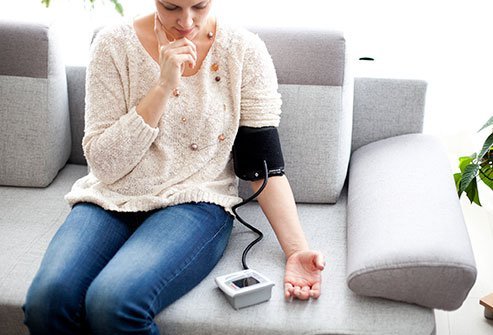What Does it Mean When the Bottom Number of Your Blood Pressure is Over 100?

When the bottom number of blood pressure (diastole) is over 100 mmHg, it may be called diastolic hypertension (DHT). The normal range of diastolic pressure should be 60 to 80 mmHg in adults. Anything above this is considered abnormal (hypertension). However, when blood pressure readings are above 180/120 mmHg, they are dangerous and require immediate medical attention.
- Diastolic blood pressure (DBP) is the pressure exerted on the walls of the arteries when the heart muscle relaxes between beats.
- A high diastolic reading has been linked to a higher risk of diseases involving the large artery called the aorta that carries blood and oxygen from the heart to the abdomen and chest.
- People with an elevated diastolic reading were more prone to developing an abdominal aortic aneurysm, an enlargement of the aorta that may have serious consequences.
- The problem with such an enlargement is that it can lead to rupture and a high risk of death.
- Few studies and researchers have reported that elevated DBP appears to be associated with cognitive impairment (memory deficit) in people who are 45 years and older. Each 10-point increase over 90 mmHg was associated with a 7 percent higher risk of problems with cognition as per studies conducted at the University of Alabama at Birmingham. Although a causal relationship could not be established, it's possible that by preventing or treating high blood pressure, we could potentially prevent cognitive impairment.
- A diastolic pressure of more than 100 mmHg (DHT) is associated with a significant incidence of strokes.
Causes of DHT
DHT is most commonly associated with
- Increased body mass index (obesity)
- Increased glucose level
- Increased alcohol consumption
- High triglyceride levels
- Family history of hypertension
- Previous cardiovascular events
- Certain factors such as male gender may put you at a slightly higher risk.
Treatment options for DHT
- Because the risk of cardiovascular events is low in young people, no treatment is required. However, treatment in elderly people should be individualized in such a way that the underlying cardiovascular disease is addressed and the target DBP does not fall below 70 mmHg.
- Lifestyle measures and weight loss must be initiated.
- A study on DHT reported that calcium channel blockers are frequently used with success. Other drugs of choice are angiotensin-converting enzyme inhibitors, angiotensin receptor blockers and diuretics.
What causes low diastolic blood pressure?
The decrease in your diastolic blood pressure (DBP) probably represents age-related stiffening of your arteries. Because diastole is a time when the heart receives blood, low diastolic pressure may compromise the blood flow to the heart. Causes of low diastolic blood pressure are as follows.
- Prolonged bed rest that causes reduction in tone of the arteries.
- Dehydration due to excess sweating.
- Reduced water intake.
- Loss of water in stools due to diarrhea.
- Loss of water in urine due to medications such as diuretics, antihypertensive medications, medications for Parkinson’s disease and narcotics tricyclic antidepressants.
- Alcohol can cause dilation of the blood vessels, which may lead to lower diastolic blood pressure, lower heart rate, malfunctioning of the heart valves and heart attack. These are serious disorders that require care and treatment.
- Hormonal deficiencies and other types of endocrine dysfunction such as hypothyroidism or excess blood loss during menstruation.
- Allergic reactions due to drugs, food or insect bites.
- Nutritional deficiency of B vitamins and iron leading to anemia.
- Prolonged standing that may lead to blood pooling in the legs.
Common signs and symptoms of low DBP may include
- Unusual thirst
- Breathlessness
- Light-headedness
- Fainting
- Dizziness, which may increase with walking or position change
- Confusion
- Dullness
- Sweating
- Nausea
Studies have shown that very low DBP is associated with an increased risk of heart disease. More importantly, a study found that low DBP was associated with an increased likelihood of coronary heart disease events and mortality. Studies explained that if individuals have DBP that is too low, they might not receive enough blood flow to the heart muscle itself, and this could lead to elevations in troponin (cardiac enzyme). Over time, it’s not just elevations in troponin but low DBP that causes actual damage to the heart muscle. Research, however, shows that high systolic readings are the most predictive of a harmful cardiovascular outcome. As a result, they were given more weight in cardiology guidelines and estimating risk. Having both numbers within a healthy range is good for you and your heart.
